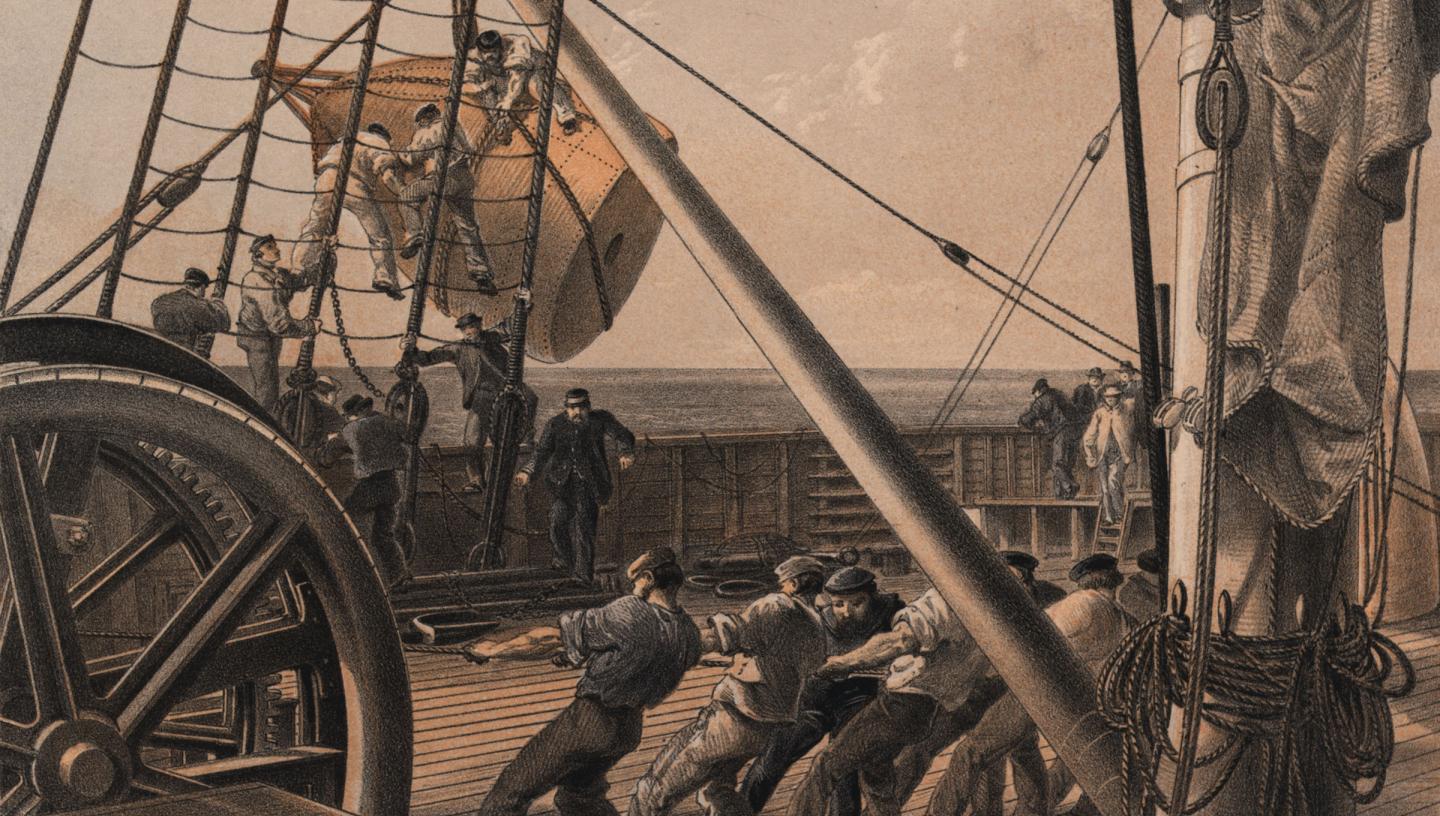
Port and starboard
Where ‘left’ and ‘right’ could lead to confusion, ‘port’ and ‘starboard’ are perfectly clear and unambiguous to a seafarer.
At sea, an emergency can happen at any time, so it is vital that everything aboard can be clearly identified and quickly described.
Which side of a ship is starboard?
Starboard is the right of the ship as you look forward.
What’s the origin of the sailing term ‘starboard’?
Boats developed from simple dugout canoes. As the majority of people are right-handed, most paddlers steering canoes naturally steered from the right-hand side (looking forward) of the boat. As canoes developed into larger vessels, the steering paddle grew larger and developed into a broad-bladed oar, held vertically in the water and permanently fixed to the side of the boat by a flexible lashing or a built-in moveable swivel.
The seagoing ships of maritime Northern Europe all featured this side-hung rudder, always on the right-hand side. This rudder was known as ‘steorbord’ in Anglo-Saxon, and was further developed in medieval times into the more familiar apparatus fixed to the sternpost. The word ‘steorbord’ evolved over time into ‘starboard’, and it remains in the English language to describe anything to the right of a ship’s centreline, when viewed from the rear.
What is the bow of a ship?
The bow is the part of the ship that is usually most forward when the vessell is moving - the front end.
What is the stern of a ship?
The stern is the back of the ship, or the aft-most part.
Which side of a ship is port?
Port is the left hand side of a ship.
What’s the origin of the sailing term ‘port’?
While ‘starboard’ means to the right-hand side of the vessel, the left-hand side is now referred to as ‘port’ – though this wasn’t always the case.
In Old English, the term was ‘bæcbord’ (in modern German Backbord and French bâbord). This did not survive into medieval and later English, when ‘larboard’ was used – a term that possibly derived from ‘laddebord’, meaning ‘loading side’; the side rudder (‘steorbord’) on the right-hand side would be vulnerable to damage if it went alongside a quay, so early ships would have been loaded (‘laded’) with the left-hand side against the quay.
However, from an early date, port was sometimes used in place of ‘larboard’, probably deriving from the loading port. However, it was only from the mid-19th century that the term was formalised. According to Admiral Smyth’s The Sailor’s Word Book, published in 1867, ‘the left side of the ship is called port, by Admiralty Order, in preference to larboard, as less mistakeable in sound for starboard.’
What were port and starboard watch stripes?
It was customary from Elizabethan times to divide the ship’s company into two watches – starboard and port – one of which is always on duty watch.
Watch stripes were lengths of material worn around the shoulder seam of a sailor’s jumper to show which watch they belonged to. The starboard watch wore the stripes on the right shoulder, the port watch on the left shoulder. On blue clothing the stripe was red, on white clothing it was blue. Watch stripes were scrapped in around 1895, but continued to be used on boys’ training ships until 1907.